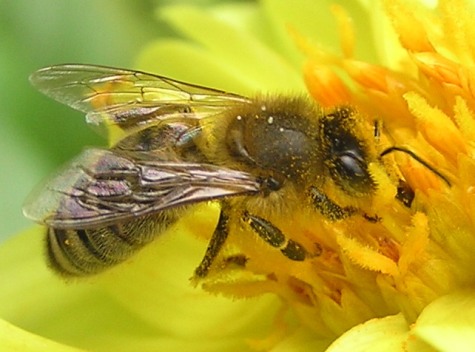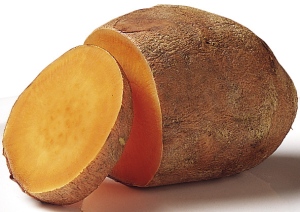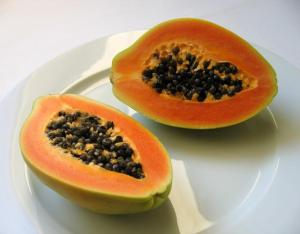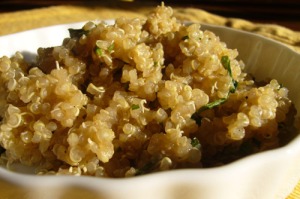Earth Solutions explores the future of farming with its Farm in a Box™
Visit EarthSolutions.com
Earth Solutions explores the future of farming with its Farm in a Box™.
The buzz started last spring in Cabbagetown as Dr. Dave, began exploring a new type of organic gardening in his backyard, aquaponics.
“It was on the front porch so neighbors who heard the water and saw the rain barrels and plant beds made from salvaged metal roofing started asking questions.” Park Pride asked me to consider a grant proposal for expanding the system to a local Community Center. Soon after, a string of state and national news outfits began to write and film stories.
“It was NPR by the time I had moved took the idea inside and when spring arrived Atlanta’s Fox 5 and the Clark Howard Show followed the progress in the backyard.
“When The Wall Street Journal called it took my breath away and I realized that this was a really big story. But the biggest was when I found myself on July 4th, setting up the Farm in Box for Good Morning America in Central Park. ”
It had been only one year since Earth Solutions founder had downloaded his first set DIY aquaponic plans the company’s version was being broadcast across the country. This more than anything is a testament to the enthusiasm aquaponics creates and the novelty of a design that ads the element of fish to the garden, indoors or out.
-Dr. David Epstein
Our Solution: Farm in a Box™
Farm In A Box
Having studied the different systems being marketed around the world, our product development group at Earth Solutions has created pleasing designs for indoors and out, making aquaponics accessible to everyone. Placed in educational settings, next to a home window or in public spaces the Farm in a Box gives but an example of the possiblities.
In doing so, Earth Solutions has designed 4 aquaponic Farm in a Box models and has two more in development. These include the Little Tokyo (as seen on Good Morning America), the Sydney, Grand Cayman and the Phoenix. Originally we launched these with wooden tanks but realized that glass was more experiential and created more educational opportunities.
Earlier models were made from FSC certified pine, to save on cost, but required paint or finish to leave outdoors. Newer models are of FSC Certified cypress which is more water tolerant. Rather than relying on PVC containers we are using EPDM rubber to create a water tight bed liner. This is the most stable form of pond liner and is recognized as the best material in aquaculture. These systems are available at Earth Solutions website and by taking advantage of our Holiday Promo Code: AQUA2431you are eligible to receive a 15% discount through December 15th, 2009.
“These smaller systems are not merely convenient means of gardening on patio or indoors but they truly represent the future of gardening. As our world’s population rises and resources of fish and farmland diminish we have no choice but to redefine how we feed ourselves. Aquaponics is one very important step to our sustainability on this very small planet. By taking responsibility to feed ourselves on an individual and community level we can wrestle the task of farming away from the agriculture industry which will has already become overburdened. By teaching our children how simplified garden methods exist, we will have sown the seeds to our survival.”
– Dr. David Epstein
“Very Cool!”
“That’s Amazing!”
“Wow! This makes gardening fun and educational!”
“I can create an entire science curriculum around this system!”
These were some of the comments we heard as people visited our booth. The children
were particulary taken which supports our goal of using our aquaponic systems in educational settings.
Remember, Aquaponics works best when people work less!
Follow us as this exciting story continues in 2010!
Earth Solutions
Be a part of the earth’s solution.
What is Aquaponics?
Aquaponics Farm in a Box
Aquaponics is a method of gardening that utilizes relationships that exist naturally between fish and plants. Functionally it is the merging of aquaculture (fish farming) and hydroponics (soil less gardening). Yet energetically the efficiencies created to producing organic vegetables and organic fish are remarkable:
- No fertilizers or organic compost required
- No pesticides to manage soil born disease
- Less labor – No weeding or soil amending, above ground cultivation.
- Minimal water use, yet plants remain continuously hydrated
- No effluent waste discharged
- Minimal energy to run systems
While aquaponics is still in its infancy, large scale operations are already in full production in Canada, Australia, Mexico, Israel and the US. The greatest body of research comes from the work of James Rakocy at the University of Virgin Islands. Domestically Growing Power in WI provides demonstrations and workshops.
Most Nutritional Foods
Twenty Best Crops Ranked by CSPI Nutrition Score. This info is from the Center for Science in the Public Interest (CSPI), collated by Robert Arnot, M.D. CSPI scored each vegetable by adding up its percent of the US RDA (recommended daily allowances) for six nutrients plus fiber (Vitamin A, C, folic Acid, iron, copper, and calcium). They used a slightly different but similar scoring scheme for each food category (vegetables, fruits, beans, and grains).
1) Sweet Potato
2) Carrot
3) Spinach, raw
4) Collard Greens
5) Red Bell Pepper, raw
6) Kale
7) Dandelion Greens
8 Broccoli
9) Brussel Sprouts
10) Potato (Baked, with skin)
11) Winter squash
12) Swiss Chard
13) Snow Peas
14) Mustard greens
15) Kohlrabi
16) Romaine Lettuce (1 cup)
17) Cauliflower
18) Asparagus
19) Green Bell Peppers
20) Parsley
Best Fruits (These were ranked according to Vitamin A, C, folic acid, potassium, and fiber).
2) Cantaloupe
3) Strawberries
4) Oranges
5) Tangerines
6) Kiwis
7) Mango
8 Apricots
9) Persimmons
10) Watermelon (2 cups)
11) Raspberries ( 1cup)
12) Grapefruit, red or pink
13) Blackberries
14) Grapefruit, white
15) Honeydew melon
16) Peaches
17) Pineapple
18) Star Fruit
19) Blueberries
20) Cherries, sweet
Best Beans
2) Pinto Beans
3) Chickpeas (garbanzos, ceci)
4) Lentils
5) Cranberry beans
6) Black-eyed peas ( cowpeas)
7) Pink beans
8 Navy beans
9) Black beans (turtle beans)
10) Small white beans
11) White beans
12) Baby Lima Beans
13) Kidney beans
14) Adzuki beans
15) Great Northern Beans
16) Mung Beans
17) Lima Beans, large
18) Broad beans (fava beans)
19) Peas (split, green)
20) Tofu, raw, firm
1) Quinoa
2) Whole wheat macaroni or spaghetti
3) Amaranth
4) Buckwheat groats
5) Spinach Spaghetti
6) Bulgar
7) Pearled barley
8 Wild rice
9) Millet
10) Brown rice
11) Triticale
12) Spaghetti
13) Wheat berries
14) Macaroni
15) Kamut
16) Rolled oats
17) Spelt
18) Converted white rice
19) Couscous
20) Instant White rice
Where’s the Buzz? Saving the Bees with Aquaponic Gardening
Where’s the Buzz? Saving the Bees with Aquaponic Gardening
S. Corey Thomas

For many backyard gardeners, the familiar sight of honeybees buzzing about the blossoms has been troublingly absent in recent years. Since 2006, a mysterious syndrome called colony collapse disorder (CCD) has taken a heavy toll on bee populations around the world. Though they have many theories, scientists are still unsure of the primary culprit behind the mass disappearances.
A new documentary airing on the Planet Green network takes a closer look at the precarious state of honeybees and their human handlers. The Last Beekeeper follows three American apiarists struggling to weather the hardships of collapsing colonies in a depressed global economy. At stake are not only the livelihoods of the beleaguered beekeepers, but also the harvests of a wide array of fruits, vegetables and nuts that stock our pantries. Foods from strawberries to almonds rely entirely on the nomadic bees, trucked across long distances on flatbed trailers to pollinate the seasonal crops.
Colony collapse disorder brings to light just how vulnerable and unnatural we’ve allowed our centralized food production to become. Without the annual transportation of thousands of beehives across the country, many crops would never yield their fruits and grocery store shelves could quickly go bare. Monoculture farming and urban sprawl have added further stress to honeybee populations, eliminating the diverse, wild habitats that support pollinator insects naturally.
Aquaponics provides a sensible solution to many of these problems. By localizing food production in our own communities, we can ensure our connection to sustenance in times of uncertainty. Including bee-favored plants such as rosemary, lavender, and oregano in our aquaponic gardens helps to attract and support native honeybee populations, which in turn keep the plants healthy and fruitful. And as we recently discovered in the large system in Dr. Dave’s backyard, these aquatic ecosystems can double as a cheerful watering hole for thirsty bees!
The symbiotic relationships established in aquaponics – from fish to plants to helpful insects – are complex, and endlessly surprising. By modeling our gardens on nature, we avoid the pitfalls of a collapsing industrial culture, beehives and all, while benefiting from all the wisdom of the earth.
Check out this video of busy honeybees stopping by Dr. Dave’s aquaponic garden for a drink:
Tips for Growing Duckweed

Tips for Growing Duckweed
Where to get duckweeds?
Duckweeds are available from many sources.
How to handle duckweeds?
Duckweed plants are delicate and easily damaged by fingers, forceps and other instruments. Individual plants and small colonies may be picked up and moved without damage using a bacteriological loop. Just place the loop in the medium beneath the plant and lift up. To collect larger quantities of plants, use lightweight screening material to net the plants from below. Fiberglass screen material is available in hardware stores. Alternatively, fabric stores sell strong, light-weight netting used for making veils. Duckweed roots are sticky and will adhere to screens and nets, so it may be necessary to gently scrape the plants off the net with a knife or a thin spatula.
How to grow duckweeds?
Growing duckweeds is like growing any other plant. Moderate conditions of temperature and light and a liquid medium with the necessary nutrients are essential for good growth. Fortunately, duckweeds adapt well to a wide range of conditions and are easy to grow.
Duckweeds can be grown in the pond water from which they were collected in open containers. It is important to replace the water frequently, since evaporation will result in concentration of salts. Using open containers prevents overheating if you place the containers outside or in a sunny window. See below for more about lighting duckweeds for the best growth.
In nature duckweeds grow in water from many sources and compositions. They can be grown in artificial pond water or in diluted aquaculture media, such as Hoagland’s solution. It is important to provide a source of chelated iron and to adjust the pH to the optimal range.
It is important to keep your duckweed cultures clean. If you collect fresh duckweed specimens from nature, the water will contain a variety of other organisms. These will include bacteria, fungi, algae, protozoa, and even small multicellular animals and insect larvae. You can clean up your duckweed cultures by transferring the plants individually to clean fresh water. Remove damaged and aged (yellow or white) fronds from your cultures as they appear.
Native populations of duckweeds may be mixtures with varying genetic compositions. For serious work it is advisable to start cultures from a single clone. This will help increase uniformity for experimental work. It is easy to clone duckweeds.
Lighting duckweeds for the best growth.
Direct sunlight is a natural condition for duckweeds. Duckweeds commonly grow in open ponds or shallow wetlands with little or no shade. However, direct sunlight can be a problem if you grow duckweeds in small containers. Sunlight will warm the water and cause evaporation. Replacing the lost water frequently (not just topping off the lost volume) is important. Otherwise, you will gradually concentrate the salts in the growth medium. Duckweeds are freshwater plants (glycophytes) that do not tolerate high salt conditions. Plants grown in covered containers may not lose water from evaporation, but under direct sun the interior will overheat, bleaching and killing the plants.
Indirect sunlight, from a north window or skylight may be an acceptable light source, but growth may be slow, particularly if the days are short and there is much cloud cover. If you use indirect sunlight, remember that radiation cooling can be a problem at night during the colder months. Radiation cooling results from the difference in temperature between the plant (room temperature) and the night sky (very cold). Radiation cooling will slow duckweed growth, although most duckweed species are not damaged by cool temperatures. It may be necessary to cover the window at night to prevent excessive cooling. [ Read how greenhouses work. ]
Incandescent light bulbs are a poor choice. A major fraction of the light that they emit is in the form of infrared radiation that will directly overheat your plants. It is hard to obtain sufficient light from incandescent lamps for good photosynthesis without overheating, so they are not recommended.
Fluorescent lights are recommended if closed culture vessels are used, or if a sunny window is unavailable. Unlike incandescent bulbs, fluorescent tubes produce much less infrared energy. Most labs use two to four F40cw tubes in simple fixtures (often sold as shop lights) hung roughly 30 to 50 cm above the cultures. These conditions will supply sufficient light for photosynthesis and plant growth without overheating the plants.
Newer compact fluorescent fixtures that combine a twisted fluorescent tube with an electronic power supply in a screw-in base are especially convenient for building small duckweed growth areas. These fluorescent fixtures are also available in reflector mounts like floodlights. Plans for building an inexpensive portable plant growth stand are available.
Growth Temperature.
Different duckweed species grow from the Arctic and Antarctic Circles to the Equator and from sea level to the high mountains. However, different species are better adapted to various temperature conditions. If you are going to experiment with duckweeds outdoors, you may be more successful with a locally gathered species than with a culture from a stock center.
Duckweeds can tolerate hot midday air temperatures if the water on which they rest warms more slowly than the air. Thus, a deep container (like a bucket) will be necessary if you want to grow duckweeds outdoors in hot weather.
Under cool cool conditions, duckweeds may form dormant buds, called turions. Duckweeds can overwinter in frozen ponds as turions or seeds. Freezing vegetative fronds will cause frost damage, as in other plants.
Studying the effects of stresses, like high or low temperatures, is an excellent subject for research.
Reference
Landolt, E. and Kandeler, R. (1987) The family of Lemnaceae – a monographic study. Vol. 2, Phytochemistry, physiology, application, bibliography. Veroff. Geobot. Inst. ETH, Zurich, 638 pp.
Tomatoes thrive on urine diet
9 September 2009 | EN

Using human urine as a fertilizer produces bumper crops of tomatoes that are safe to eat, scientists have found.
Their research was published in the Journal of Agricultural and Food Chemistry last month (August).
Surendra Pradhan, an environmental biology researcher at the University of Kuopio, Finland, and colleagues gave potted tomato plants one of three treatments: mineral fertiliser, urine and wood ash, urine only, and no fertiliser. Urine is rich in nitrogen, phosphorus and potassium.
Yields for plants fertilized with urine quadrupled and matched those of mineral-fertilized plants. The urine-fertilized tomatoes also contained more protein and were safe for human consumption.
“This is a very simple technology. Urine can be collected in a urine-diverting toilet or it can be collected in a separate jerry can from an ordinary, pre-existing toilet. If wood ash is available, this can be use as a supplement of phosphorus, potassium and other nutrients,” Pradhan told SciDev.Net.
He says that the method is a free alternative to expensive mineral fertilizer, which is also not easily available in remote or hilly areas. Pradhan also believes that the idea could improve sanitation by incentivising toilet-building.
A pilot programme based on the research will be launched in Nepal in November, says Pradhan.
But Håkan Jönsson, eco-agriculture and sanitation system technology expert at the Stockholm Environment Institute in Sweden, told SciDev.Net: “The amount of urine that can be collected from a person or a family is fairly small (equivalent to about two bags of fertilizer per year for a west African family). The technique is of great value to a subsistence farmer but does not suffice for even a medium-scale cash-crop farm.”
He adds that to fertilize larger areas, many urine-diverting toilets would have to be linked up to a good transportation system.
There are also cultural issues. In most cultures, Jönsson says, faeces are considered impure and urine is viewed in a similar way, even though the hygiene risk associated with it is minimal.
Pradhan says that studies will be done to assess how acceptable the idea is in different cultures. His team will also investigate ways of decontaminating any faecal matter in urine collected from a toilet using a jerry can.
He adds: “For large-scale implementation of this idea, we are trying to find different methods to reduce the volume of the urine in economic way, without losing the nutrients”.
Urine as alternative to chemical fertlizer
Human waste could be an alternative to chemical fertilizers.
Matt Kaplan
Nature.com
29 June 2007
Human urine could nourish the plankton used as food on fish farms. Plankton grown in diluted urine do better than those given other nitrogen-rich materials, ecological engineers have found.
Bara Bihari Jana and his colleagues at the University of Kalyani, India, mixed ground water with human urine from the university’s urinals and added the zooplankton Moina micrura, which is often fed to hatchling fish in commercial fisheries.
They also tried rearing the plankton in various cocktails of cow urine, vermin compost, poultry droppings and cow dung, all of which are commonly used in fish farming in poor regions where chemical fertilizers are not available. All treatments used half a litre of urine, or half a kilo of dung, to every 4,500 litres of water.
Young plankton in human urine began reproducing at least four days earlier than those in other tanks, lived longer and produced more offspring, the researchers found. The study is published in Ecological Engineering1.
“Human urine is a stable liquid and contains valuable nutrients. I see no reason why it couldn’t be used for this purpose if it provides a suitable chemical environment for the zooplankton to grow,” says Stephen Smith, an environmental biochemist at Imperial College London.
Waste not
The Indian team suggests that human urine contains high concentrations of nitrogen compounds that degrade rapidly to release amino acids and minerals, fertilizing the growth of algae, which the plankton then feeds on. “We believe this quick release of nutrients induced the fast reproduction in the plankton,” says Jana.
Worldwide, culturing planktonic fish food is a multi-billion dollar industry that uses millions of tonnes of chemical fertilizer.
Human urine is cheaper and more environmentally friendly than chemical fertilizers. Its use would reduce eutrophication — the process where fertilizers washed off the land cause damaging blooms of plankton in rivers, lakes and the sea.
“New and alternative uses for wastes and wastewater like this need to be identified,” says Smith. “My only potential concern would be that the urine is from healthy individuals not taking medication or antibiotics as these could be excreted in the urine.”
“We have not yet encountered any diseases or abnormalities in the zooplankton grown in tanks with human urine, but we are looking for hormone residues and antibiotics, just to be sure” says Jana.
Human urine also has potential as an agricultural fertilizer. Studies into its feasibility and safety usually suggest that it is an acceptable alternative to chemical fertilizers, but concerns about disease transfer and recycling of antibiotics and hormones in the human food cycle have hampered progress.






